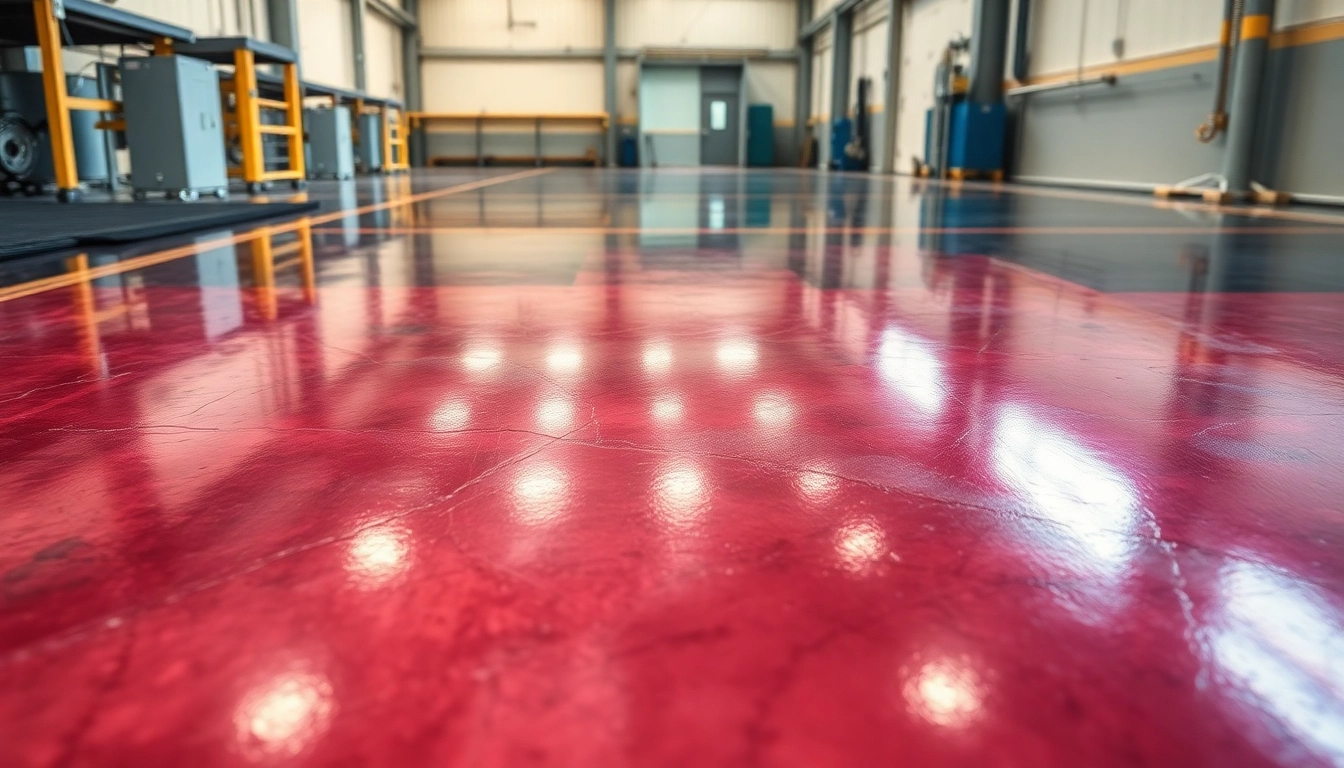How to Achieve a Durable and Stunning Epoxy Resin Floor for Your Space
Epoxy resin floors have revolutionized the way we think about surface finishing, combining durability, aesthetic appeal, and ease of maintenance into a single seamless coating. Whether in residential garages, commercial warehouses, or industrial facilities, epoxy resin floors provide a resilient surface that can withstand heavy traffic, chemical exposure, and mechanical wear. As a versatile flooring solution, they have become increasingly popular among homeowners, contractors, and facility managers seeking long-lasting and visually striking surfaces.
If you’re considering upgrading your space, understanding the key aspects of epoxy floors is essential. From their chemical composition to practical application methods, an informed approach ensures optimal results. For comprehensive guidance, visit our dedicated page on epoxy resin floor options and expert services.
An epoxy resin floor is a type of durable flooring surface created by applying a thermosetting epoxy resin, often combined with a hardening agent, directly onto concrete substrates. This process forms a solid plastic-like layer that bonds strongly with concrete, providing a seamless, smooth, and resilient surface.
The benefits of epoxy resin flooring are extensive:
Given these advantages, epoxy floors are an optimal choice for enhancing functionality and visual appeal in various settings.
The versatility of epoxy resin floors extends across a multitude of environments:
The ability to customize color schemes, add decorative elements, and incorporate anti-slip features makes epoxy floors adaptable to specific aesthetic and safety requirements.
Proper planning is fundamental to a successful epoxy flooring project. Critical factors include:
A clean, dry, and level concrete surface is vital. Any dirt, oils, or existing coating must be thoroughly removed, often involving shot blasting or acid etching. Imperfections or cracks should be repaired to prevent future issues.
Selecting a high-quality epoxy resin suitable for your specific environment is essential. Consider factors like chemical resistance, UV stability, and application thickness. For example, a 100% solids, self-leveling epoxy like the Rockhard USA epoxy kit offers excellent bonding and chemical resistance ideal for versatile applications.
Temperature, humidity, and airflow during installation influence the curing process and final finish. Contractors should adhere to manufacturer guidelines to mitigate issues such as bubbles or incomplete curing.
Wearing appropriate personal protective equipment and ensuring proper ventilation prevents health hazards. Using low-VOC, solvent-free epoxy systems enhances environmental safety.
Begin by thoroughly cleaning the concrete slab—removing dust, oils, and residues. Mechanical methods like shot blasting or diamond grinding create a rough surface for better adhesion. Repair any cracks or holes with appropriate patching compounds, then prime the surface with a bonding agent recommended by the epoxy manufacturer.
Select an epoxy resin compatible with your application. For residential projects, water-based or 2-part epoxy kits are common. For high-traffic or industrial areas, compare products based on chemical resistance, UV stability, and ease of use. Consider brands like EPODEX or Stone Coat for high quality and durability.
Mixing epoxy thoroughly according to instructions ensures uniform curing. Use a roller or squeegee to spread the epoxy evenly, working in small sections. Applying multiple thin coats rather than a single thick coat prevents bubbling and imperfections. Incorporate decorative flakes or colorants for aesthetic enhancement, and finish with a clear topcoat for UV protection and gloss.
Regular sweeping and damp mopping with mild detergents preserve the surface’s appearance. Avoid harsh chemicals and abrasive tools that can scratch or degrade the epoxy coating. Promptly cleanup spills of chemicals or oils to prevent staining or damage.
Problems like bubbling, peeling, or cracking can result from poor surface prep, improper mixing, or environmental factors. Ensuring meticulous surface preparation, adhering to application guidelines, and controlling temperature and humidity during curing significantly reduces these risks.
Consider applying a high-quality sealant or topcoat designed for your epoxy system. Incorporate anti-slip aggregates in high-traffic areas for safety. Periodic re-coating or maintenance of protective layers extends the lifespan of your epoxy floor, keeping it looking pristine for years.
Modern epoxy systems offer an array of color choices, metallic finishes, and layered designs to create stunning visual effects. Techniques like marbling or embedded graphics enable personalized, high-end aesthetics tailored to any space.
Advances in resin formulations incorporate UV-stabilizers and advanced chemical resistance agents, ensuring longevity and color retention even in outdoor or chemically intensive environments.
A growing trend involves plant-based epoxies and low-VOC formulations that reduce environmental impact without sacrificing performance. These sustainable options appeal to eco-conscious consumers seeking quality and responsibility.
DIY epoxy kits cost between $60 and $200, suitable for small to medium areas, while professional installation may range from several hundred to thousands of dollars depending on size and complexity. Investing in high-quality materials ensures durability, reducing long-term costs associated with repairs.
Prioritize products with proven certifications, positive reviews, and reputable brands. Checking technical datasheets and consulting industry experts further assures product reliability.
Features such as UV stability, high chemical resistance, decorative customization, and eco-friendly formulations expand the functional and aesthetic value of your epoxy floor investment.
Introduction to Epoxy Resin Floors
What Are Epoxy Resin Floors and Their Benefits
Common Applications in Residential and Commercial Settings
Key Factors to Consider Before Installation
Surface Preparation
Choosing the Right Epoxy Kit and Materials
Environment and Climate Conditions
Safety and Regulatory Compliance
Step-by-Step Guide to Installing an Epoxy Resin Floor
Surface Preparation for a Perfect Finish
Choosing the Right Epoxy Kit and Materials
Application Techniques and Tips for a Professional Look
Best Practices for Maintenance and Longevity
Cleaning and Routine Care Recommendations
Common Issues and How to Avoid Them
Expert Tips for Enhancing Durability
Innovations and Trends in Epoxy Flooring
Color Options and Decorative Effects
UV and Chemical Resistance Enhancements
Eco-Friendly and Sustainable Resin Alternatives
Cost Analysis and Quality Considerations
Budget Estimation for DIY and Professional Projects
Assessing Quality and Choosing Reliable Suppliers
Value-Added Features That Justify Price

